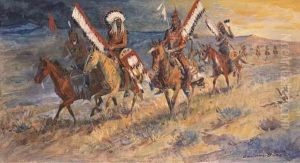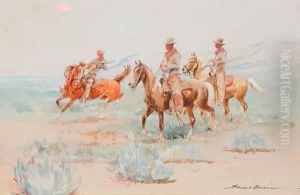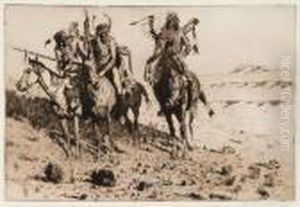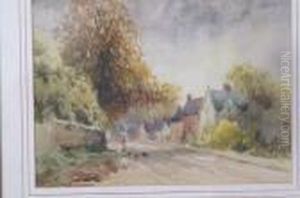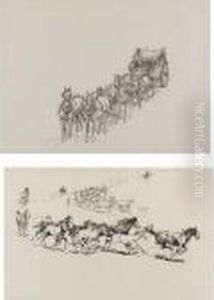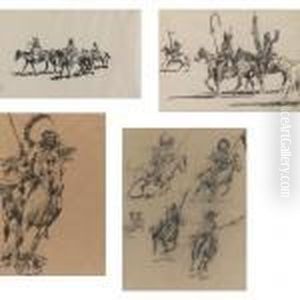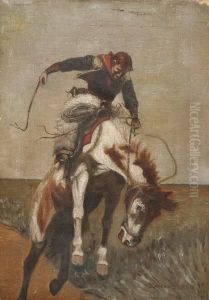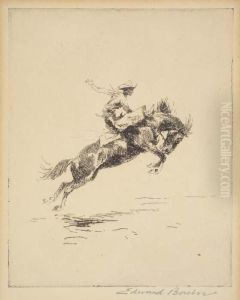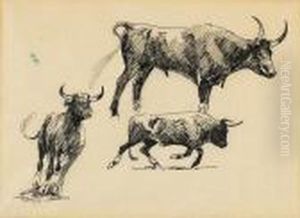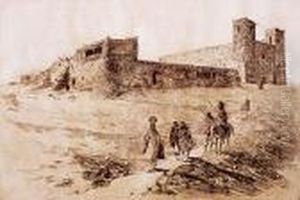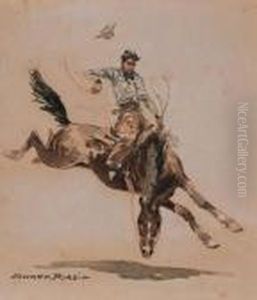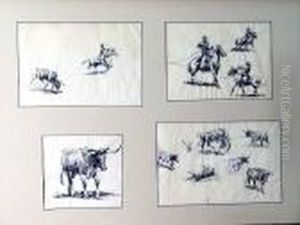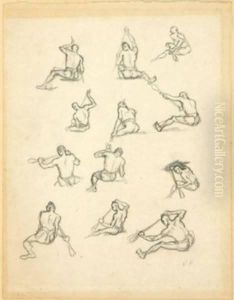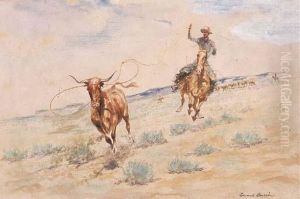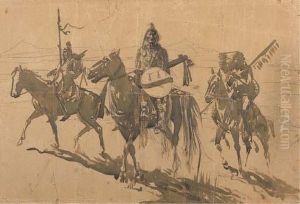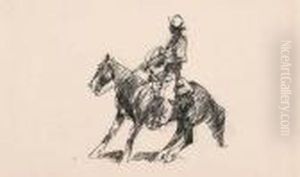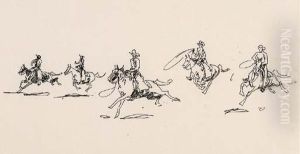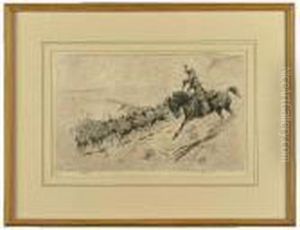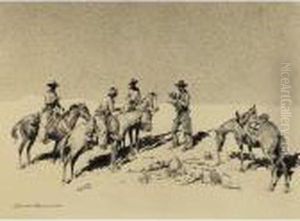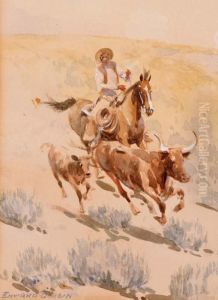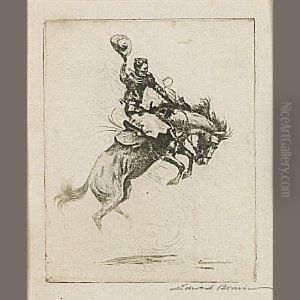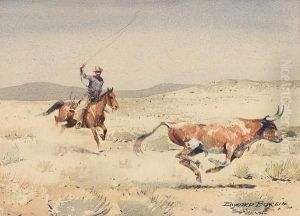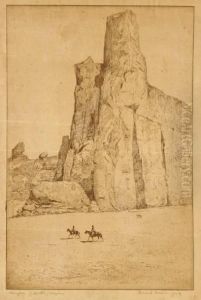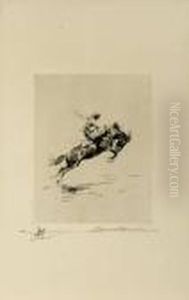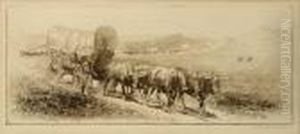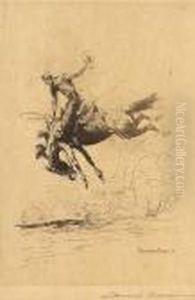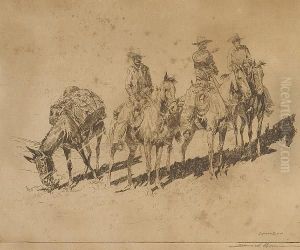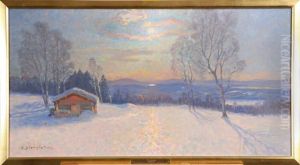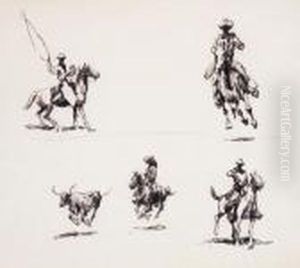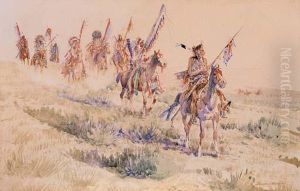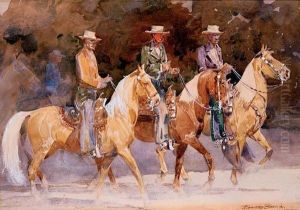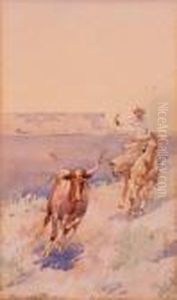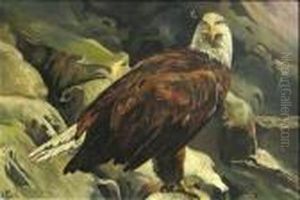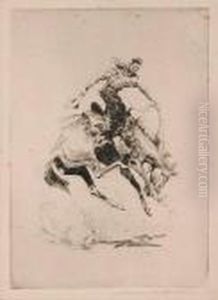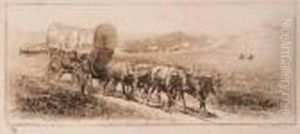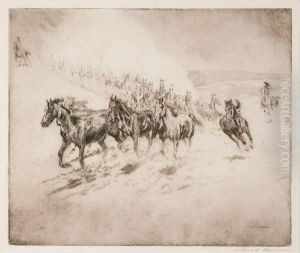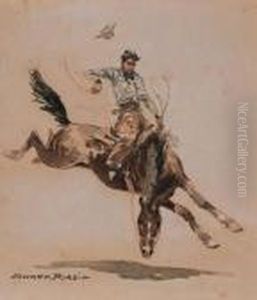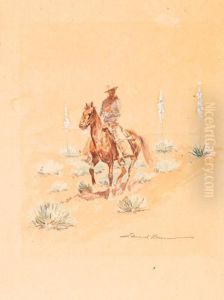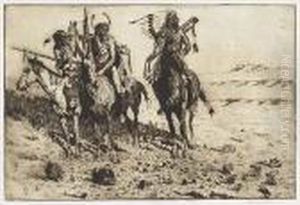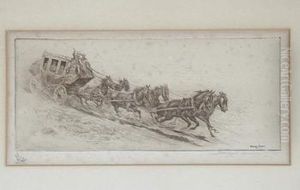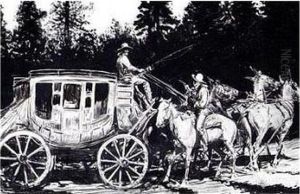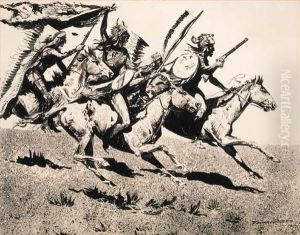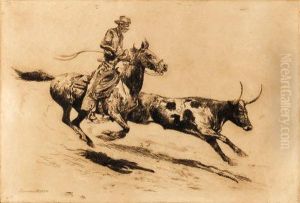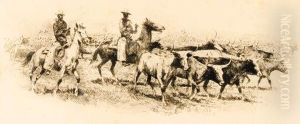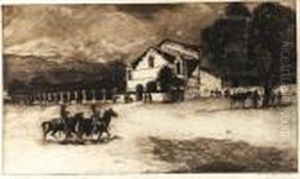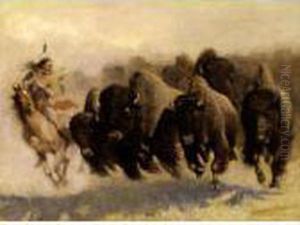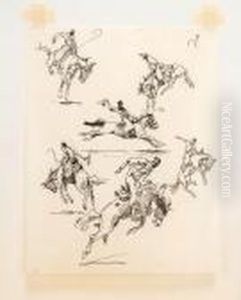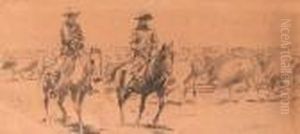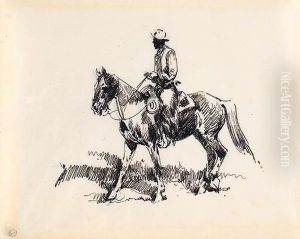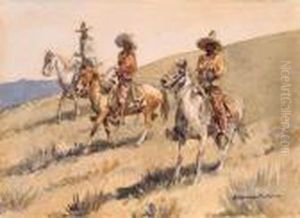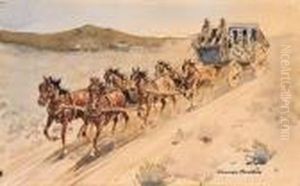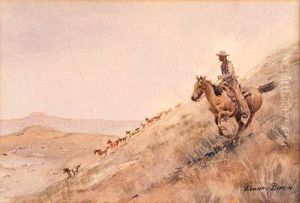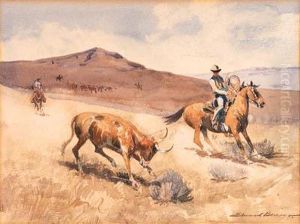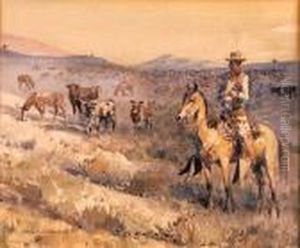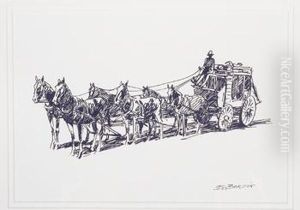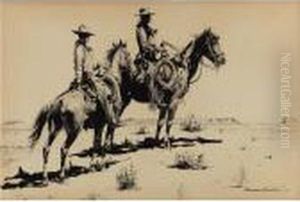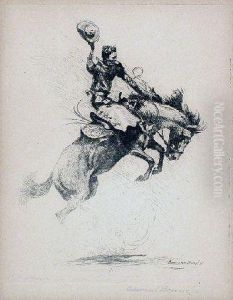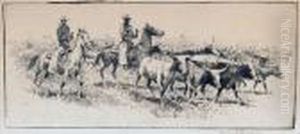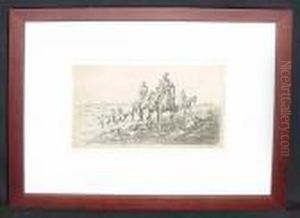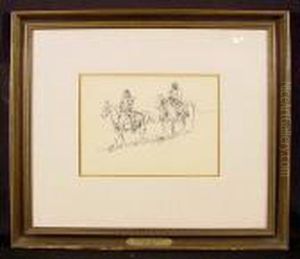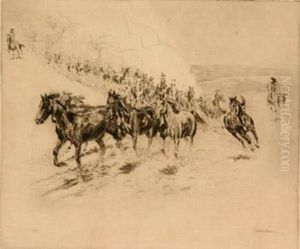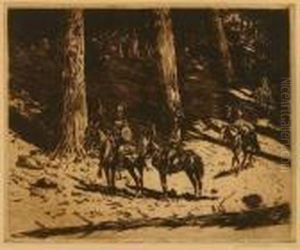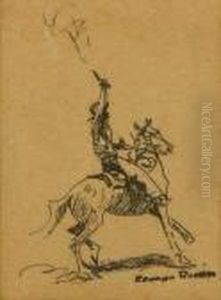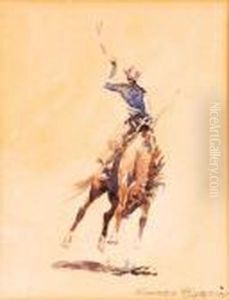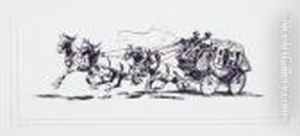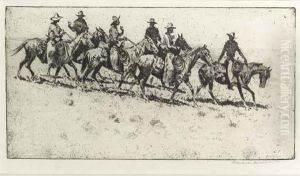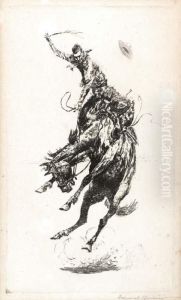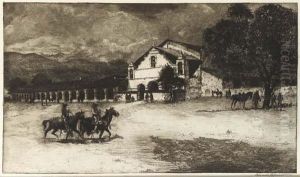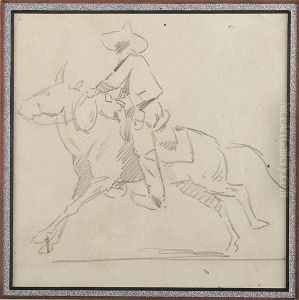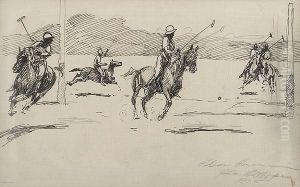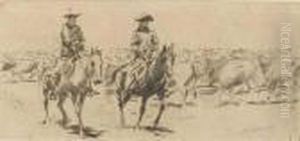John Edward Borein Paintings
John Edward Borein, born on May 21, 1872, in San Leandro, California, was an American artist renowned for his depictions of the American West. His deep fascination with Western life, including cowboys, Native Americans, and the landscape, was evident from a young age. Borein's artistic journey began in his childhood, sketching from memory the scenes and characters he encountered in and around his hometown, which was then still a part of the Western frontier.
Borein's formal art education was limited, but he was determined to refine his skills. He moved to San Francisco in his late teens, where he worked as a cowboy and attended the San Francisco Art School. Although his time at the art school was brief, it was here that he met influential artists and instructors who recognized and nurtured his innate talent for drawing and watercolor painting. His early work was heavily influenced by the detailed illustrations found in late 19th-century newspapers and magazines.
As his style matured, Borein's work gained recognition for its authenticity and attention to detail, qualities that stemmed from his firsthand experiences in the American West. He traveled extensively through California, Mexico, and the Southwestern United States, capturing the life and landscapes he observed. These travels were critical in developing his signature style, which combined technical accuracy with a romantic portrayal of the West.
By the early 20th century, Borein had established himself as one of the leading artists of the American West. He moved to New York City for a brief period, where he was part of the thriving art scene, but the West called him back. Eventually, he settled in Santa Barbara, California, where he continued to produce works that celebrated the spirit and culture of the Western United States. He was a contemporary and friend of other notable Western artists, such as Edward Borein and Maynard Dixon, and his circle included influential figures like President Theodore Roosevelt, who admired his work.
Throughout his career, Borein worked in various mediums, including etching, watercolor, and oil painting. His etchings, in particular, were highly regarded for their precision and ability to convey complex scenes with minimal lines. Borein's art was not just popular among art collectors and enthusiasts; it also played a significant role in shaping the public's perception of the American West during the early 20th century.
John Edward Borein passed away on May 19, 1945, in Santa Barbara, leaving behind a legacy as one of the most authentic and beloved chroniclers of Western life. His works continue to be celebrated for their historical accuracy, artistic quality, and contribution to American art history.
